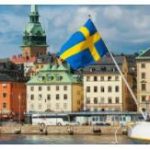During the severe depression of the 1930s, the Social Democrats (1932) came to power and, barring an interruption in 1936, led the country until 1976, creating a welfare state admired all over the world. But the excessive taxation of the government, due to the need to finance expensive public services, led in 1976 to the defeat of the socialist premier O. Palme and the victory of the bourgeois Front (centrists, liberals and conservatives). The right-wing government had a very agitated life due to continuous internal conflicts, but still managed to be re-elected in 1979. However, the 1982 elections sanctioned the return to power of Palme. In 1983 the government passed a law destined to profoundly affect the life of the country: the law that allows unions, through “employee funds”, to take partial control of Swedish companies. The Social Democrats reaffirmed themselves in the 1985 elections; on February 28, 1986 Palme was assassinated and J. Carlsson assumed leadership. Faithful executor of the political line decided by the party in 1985, despite having faced a rather difficult period for the country, troubled by widespread scandals, deflationary measures already presented). The new government obtained the approval of a tax reform, which indeed aroused discontent in the left, and carried out a vast liberalization in the corporate and financial field, but the continuous deterioration of the economy, with external pressures on the currency and consequent capital flight, led even that experience to a quick conclusion. Defeated the Social Democratic Party (never since 1928 with so few votes) in the 1991 consultations, the leadership of the country passed to the conservative C. Bildt who pursued a strongly liberal economic policy with a program of dismantling the “welfare state”. In the meantime, the country was opening up more and more to relations with the continent by first joining (1992) the European Economic Area (SEE) and subsequently, after a specific consultative referendum, to the European Union (January 1995). In the elections of September 1994, however, the Social Democratic Party recorded a notable electoral success that allowed the formation of a minority government led by I. Carlsson. The Carlsson government tried to continue the policy of austerity and spending cuts of the previous executive, but was weakened by the defeat of the Social Democrats in the European elections in September 1995 and by the announcement by the premier himself that he wanted to withdraw from political life. In March 1996, Parliament elected G. Persson, also a Social Democrat, as the new premier. With the support of the Left Party and the Center Party, the government decided (November 1997) to immediately dismantle the 12 nuclear power plants in the country. The decision was accompanied by harsh criticism from the industrial world and the trade unions. In the legislative elections of September 2002, the clear affirmation of the center left was recorded, which ensured a large parliamentary majority and saw its leader Persson reconfirmed as prime minister. He was entrusted with the task of forming a new social democratic government. Another illustrious murder shocked public opinion and disrupted the political life of quiet and peaceful Sweden: on 11 September 2003, the foreign minister, Anna Lindh, was assassinated. A few days later, through a popular referendum, according to politicsezine, Sweden refused to adopt the euro as its national currency: 56.1% of Swedes opposed membership, a result confirmed by the 2006 legislative elections, in which Fredrik Reinfeldt’s conservatives they overtook the Social Democrats with 48.1% of the vote, while the Left got 46.2%. Reinfeldt was subsequently appointed premier and formed a government, and also winning the 2010 elections, always leading the center-right coalition Alliance for Sweden. In September 2014, the coalition led by Reinfeldt came out defeated in the elections, won by the Social Democratic Party (SAP). Stefan Löfven, leader of the SAP was named premier.









